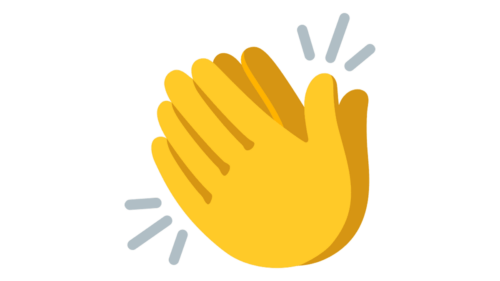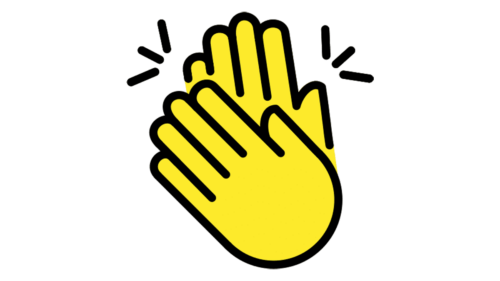👏
Did you know that you can judge your age by which emoji you use most often in correspondence? A survey of two thousand young people between the ages of 16 and 29 came up with a list of emoji used by people over the age of 30. Interviewees agree that these emoji are most often used by their bosses, parents and relatives.and one of these emoji is the Clap Emoji. It would seem quite harmless icon. But everything is not so unambiguous. Let’s get to the bottom of it.
👏 The Clap Emoji was assigned the code U+1F44F, with which it was added to the People and Body section of the Unicode 6.0 standard in 2010.
Meaning of the Clap Emoji
We clap our hands when we want to express our emotions. But where this gesture comes from, we rarely think about it. Clapping our hands is one of the strangest and loudest sounds we can make. Small children clap their hands joyfully when they feel happy; adults clap their hands when they feel children’s delight. Clapping also accompanies music and dancing. Who invented clapping, or as we also call it Applauses?
The documented use of applause appears in ancient Rome. The word itself comes from the Latin “plaudare” (“clap your hands”). And if now applause expresses positive emotions, in those times everything was not so unambiguous. For example, under Emperor Augustus the stands with spectators were divided into several parts and in front of each of them stood their “conductors”. At their signal people in the sector began to clap their hands and make noise. At the same time, the applause could either express delight or drive them off the stage.
Over time, applause became a way for the audience to thank the performers, a kind of positive feedback. The volume of applause can also be used to understand the state of the audience and the strength of their approval of what is happening.
The Use of the Clap Emoji
Use Clap Emoji to express your joy, approval, support or admiration. That is, the same emotions that in real life we would also express with applause. However, here we come to the first “But”.
As we said above, Clap Emoji is more often used by the people over 30 years old. And young people usually use other emoticons to express their emotions of admiration and joy. So, if you use Clap Emoji – be sure that your interlocutor is from the same age category as you.
As you may have already guessed, there is a second “But” in using the Clap Emoji. And this “But” refers not to age, but to cultural differences. And if in the first case you will simply be considered old-fashioned, then in the second case you risk being completely misunderstood. The fact is that, as we already know, the “applause” symbol in the West expresses praise or congratulations. In China, however, this symbol means “to make love”.
Conclusion
So, as you can see, using such a harmless emoji as Clap you can find yourself in a not the most pleasant situation. So, we recommend you to use it only when you are sure that your interlocutor understands you correctly. However, it doesn’t mean that in real life we shouldn’t clap our hands showing our positive emotions. Moreover, scientists have proven that clapping hands improves cognitive and motor skills – memory, thinking, attention and sensory perception, facilitates social adaptation and allows you to relieve stress. So clap for health!









